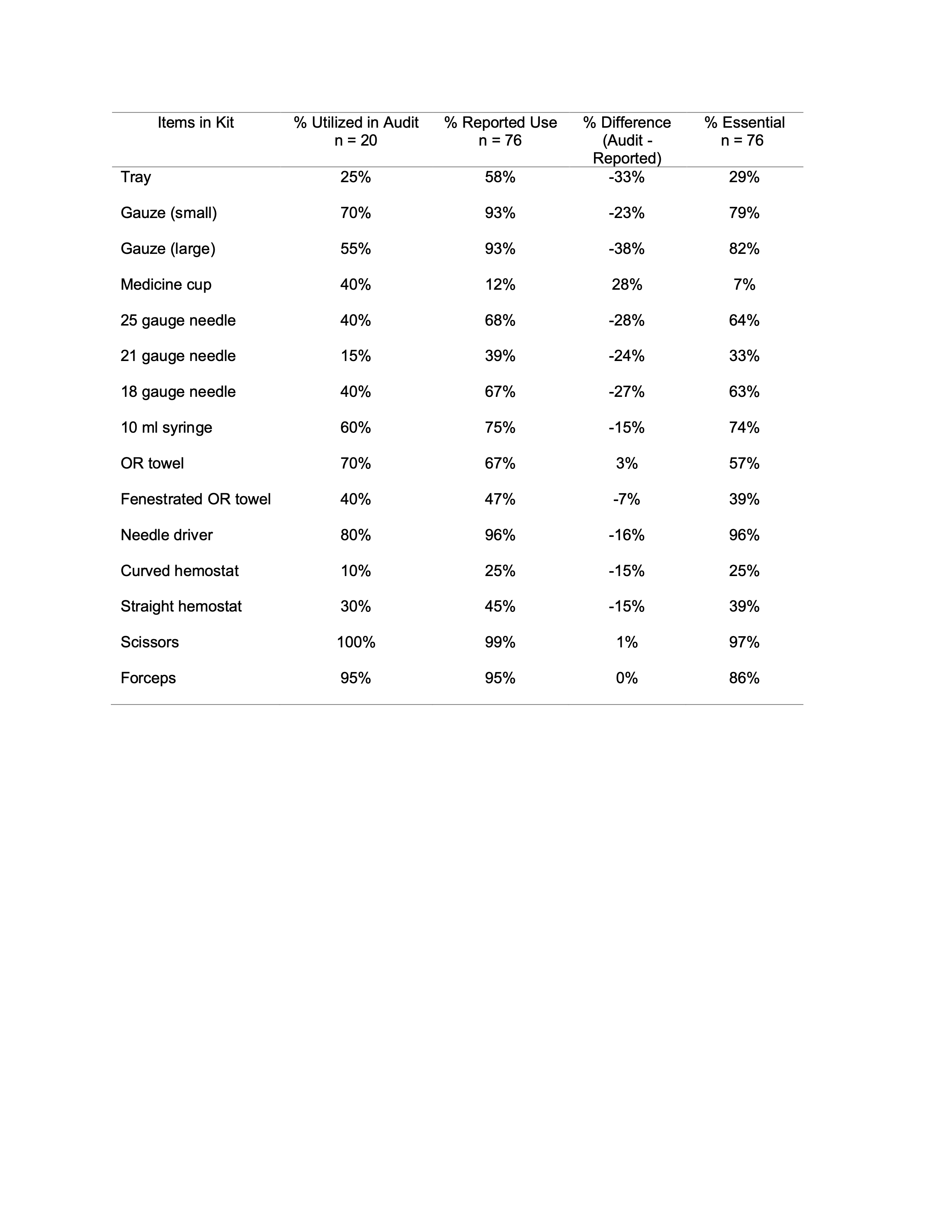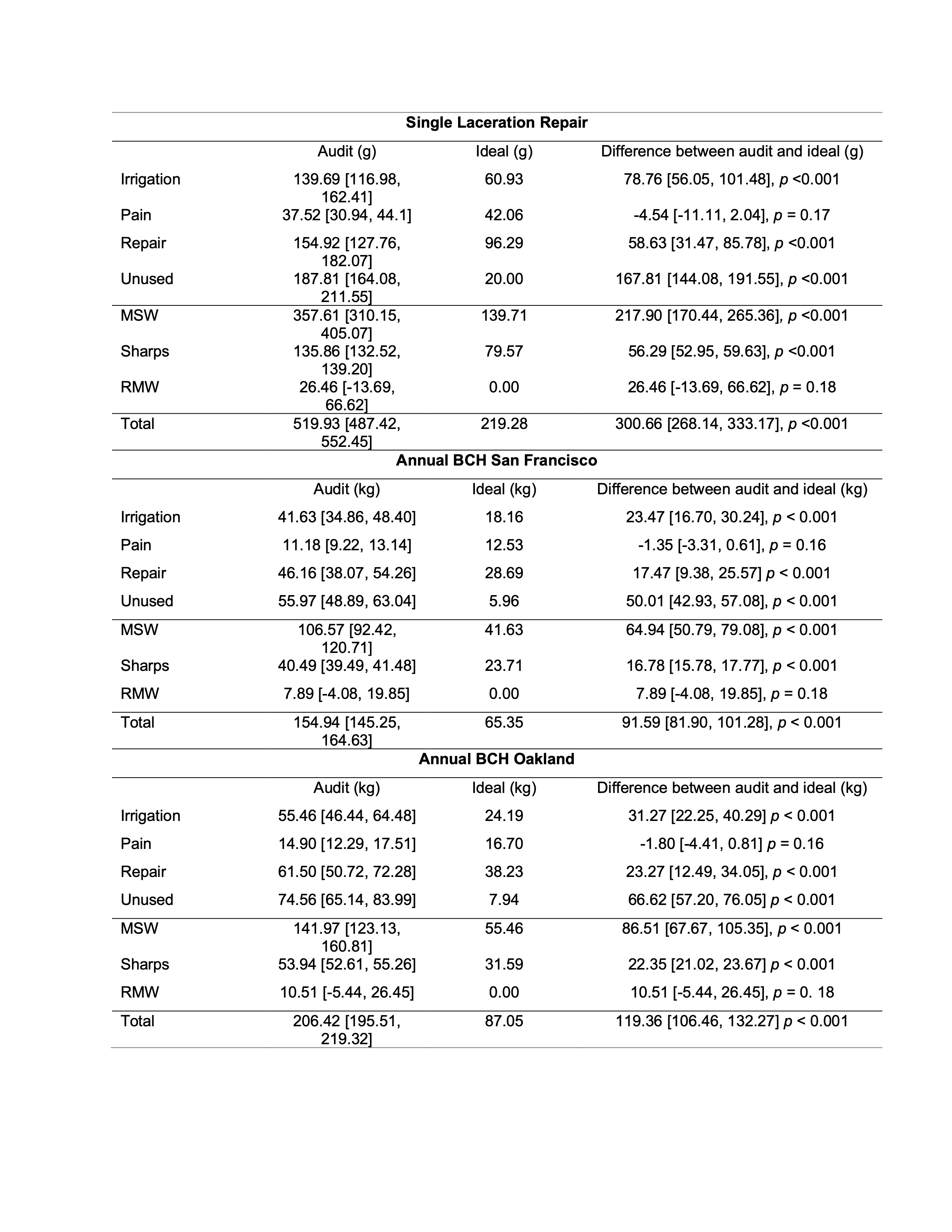Emergency Medicine
Session: Emergency Medicine 2: Operations
369 - Reducing unnecessary waste from laceration repair in the Pediatric Emergency Department: a waste audit and provider survey
Friday, May 3, 2024
5:15 PM - 7:15 PM ET
Poster Number: 369
Publication Number: 369.128
Publication Number: 369.128

Olivia M. Leventhal (she/her/hers)
Medical student
University of California, San Francisco, School of Medicine
San Francisco, California, United States
Presenting Author(s)
Background: Laceration repairs are one of the most common procedures conducted in the Pediatric Emergency Department (PED) and have potential to produce large amounts of waste.
Objective: The purpose of this study was to quantify waste from laceration repair and identify areas for waste reduction to reduce healthcare's negative impacts on climate change.
Design/Methods: A waste audit of laceration repair procedures was conducted at two PEDs to quantify waste and carbon dioxide emissions equivalent (CO2e). A provider survey investigated materials and instruments regularly utilized for laceration repair and which items are essential. Survey data was utilized to determine ideal practices, and waste from ideal use was quantified for a single laceration repair and annual estimates. Waste (g or kg) and CO2e from current and ideal practice were compared.
Results: We observed an average of 520 g of waste produced per laceration repair and an annual estimate of 155-206 kg at each PED. Processing this waste generates 21.7-47.3 TPY of CO2e. We estimated that with ideal practices, there is potential for a 58% waste (kg) and 38-50% CO2e reduction.
Conclusion(s): This laceration repair waste audit in two PEDs and provider survey quantified waste, estimated environmental impact, and proposed an evidenced-based strategy for waste reduction from laceration repair.


Figure4.jpeg
